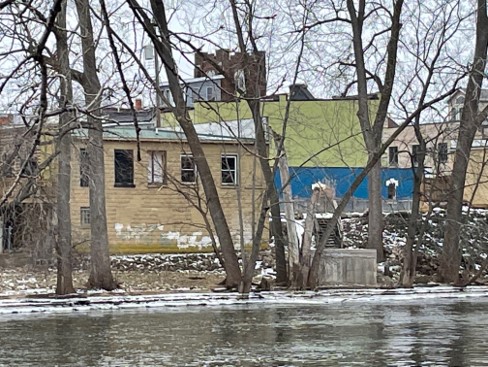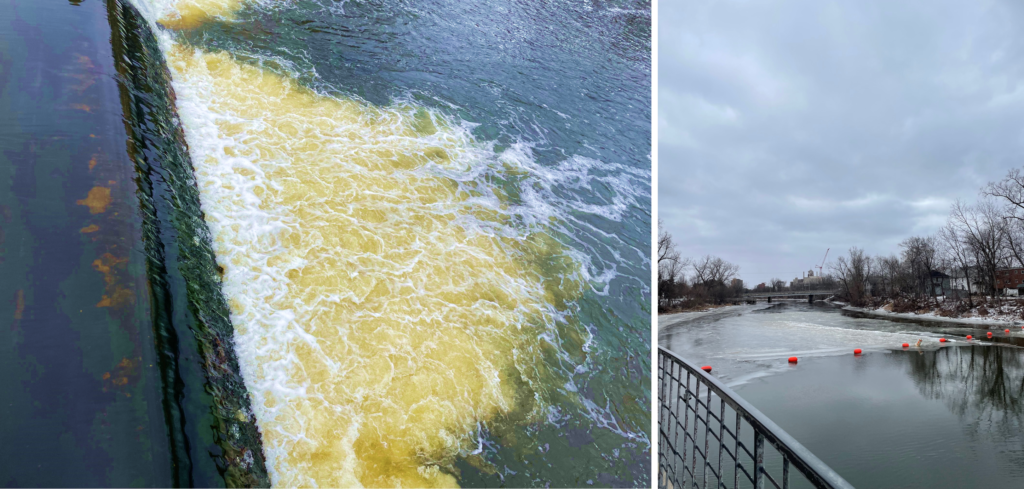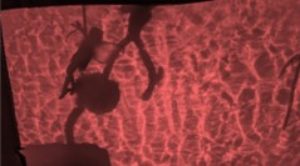< ice chips >
Jan-2022
When I walk far enough, there’s a dam and a river running behind the city past boxy-looking residences. How had I not noticed the river before?

Where the water foams and flips back on itself under the dam, it’s bright yellow like dehydrated piss. Farther out, it’s dull blue and flattening. Is this the epitome at Brenke Fish Ladder today, water at its most exhausted, not ancient and mysterious, not forming life within or manifesting Sirens, just sloshing and yellow, melting scales of ice back into itself like a woman sucking ice chips before surgery.

Walking away from the water, I see a number of city-owned objects, plastic, neon orange and white, nestled into the “natural”: buoys behind the dam, a plastic “fence” leaned up against an oak, its horizontal bars bolted onto metal stakes painted in a neon orange chevron pattern with two orange reflectors on the top flipped up and down like a dog’s ears. And in front of a pine, four orange and white striped cones have yellow caution tape flowing from their conical tips like veils. The word “CAPITAL” is written on each object’s base.

What is the function of these official objects, to showcase a comradery between city and nature or to assert a vague distrust of it? For example, this tree could fall, the dam could bust, the yellow caution tape might someday extend to where I am in the midst of my own disaster? How close can I get to nature while staying in the city, without losing my sense of place and purpose, without being so marked by the city that I lose my sense of self in relation to nature, here where a garish orange dots the vista. And why orange, why now in winter, when everything else is frosty white? And what does any of this have to do with Brenke’s Fish Ladder?
